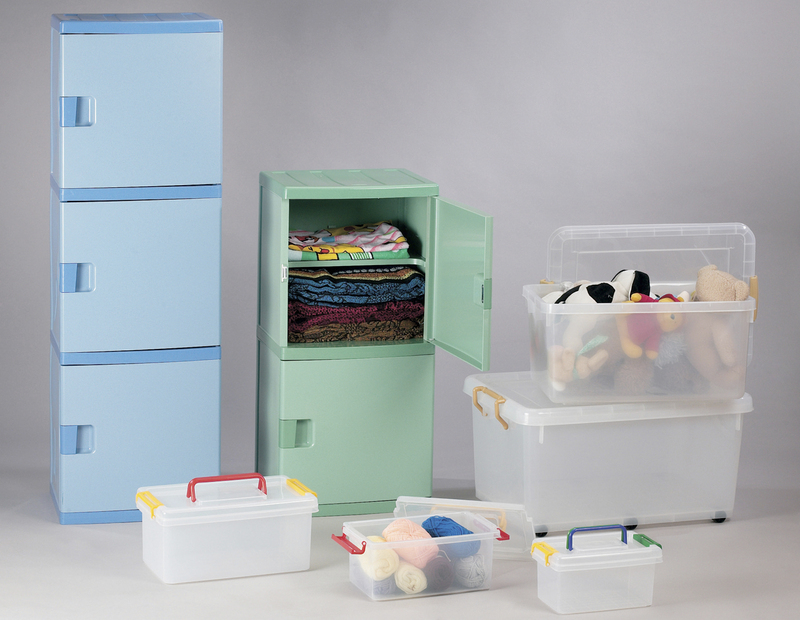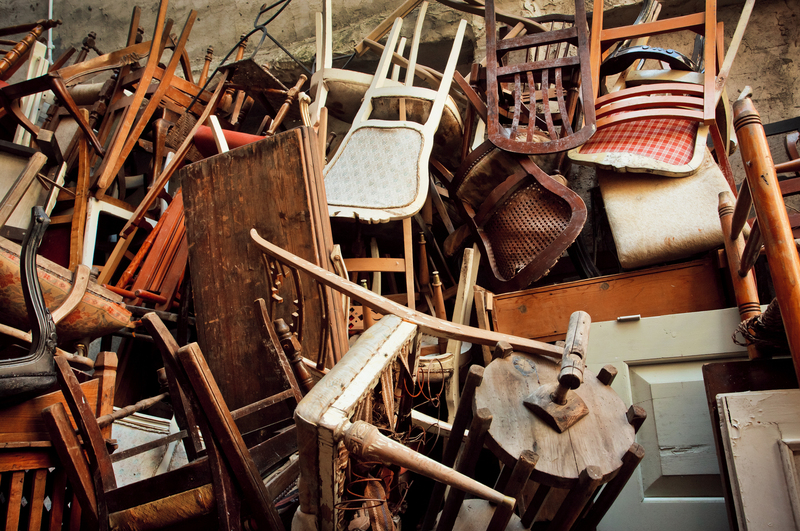The Secrets Behind Moving a Piano and Why You Should Call the Pros
Are you thinking about moving your piano? Whether you own a beautiful baby grand, an upright, or even a digital piano, the value and complexity of these instruments are undeniable. You may wonder if it's possible to handle the task yourself or if you should reach out to professional piano movers. In this detailed guide, we'll reveal the secrets behind moving a piano, the risks and challenges involved, and why hiring professionals is always the best decision.
Understanding the Complexity of Piano Moving
The process of relocating a piano isn't just about brute strength. Pianos are intricate, heavy, and surprisingly delicate instruments that demand specialized knowledge during a move. A piano can weigh anywhere from 300 to over 1,200 pounds depending on the style--making this a task best left to those with expertise. One false move could not only damage this valuable asset but also cause serious injury to anyone involved.
Why Are Pianos So Difficult to Move?
- Weight Distribution: Unlike typical furniture, the weight of a piano isn't evenly distributed. For example, grand pianos carry most of their weight in the back, while uprights concentrate it towards the top and back panel.
- Irregular Shape: The awkward size and shape of all pianos make them challenging to manipulate through doors, tight spaces, or up and down stairs.
- Sensitive Components: Pianos consist of thousands of moving parts, including strings, hammers, pedals, and keys--all easily misaligned or broken if mishandled.
- Valuable and Sentimental: Pianos can be priceless family heirlooms or expensive investments, making proper handling a must.

The Hidden Challenges of DIY Piano Moves
Many homeowners think that with enough helping hands, moving a piano is a manageable job. However, a do-it-yourself piano move is often riddled with unforeseen complications. Here are a few issues you might face if you attempt to move a piano without professionals:
Risk of Damage to the Instrument
Pianos have delicate inner workings and a fragile exterior. A single bump, drop, or slide can permanently scar the case or disrupt the alignment of the action mechanism, resulting in costly repairs--and sometimes, irreversible damage.
Potential Injury to Movers
Moving a 500-pound instrument puts tremendous physical strain on the back, arms, and legs. Without proper equipment and training, you risk serious injury, including strains, sprains, or worse.
Property Damage
Walls, floors, and even staircases can suffer from nicks, dents, and scratches if the piano slips or bumps against them. Unplanned mishaps during a DIY move can result in expensive home repairs in addition to piano damage.
Step-by-Step: How Professional Piano Movers Do It
What's the secret sauce that sets a professional piano mover apart? Let's take a closer look at their process:
1. Pre-Move Planning
- Assessment: Movers will evaluate the type of piano, its location, and the layout of both pickup and destination sites.
- Route Mapping: The team identifies possible obstacles--tight corners, stairs, narrow hallways--and plans the move accordingly.
- Protection Plans: They determine what padding, wrapping, and protection will ensure the instrument stays safe during transport.
2. Specialized Equipment
- Piano Dollies: Heavy-duty, low-profile equipment designed to support and roll pianos across various surfaces.
- Moving Straps: Thick, secure straps keep the instrument in place and help the movers lift safely.
- Piano Boards: These sturdy boards are used to distribute the weight and maneuver the piano smoothly--especially for grand pianos.
- Protective Covers & Padding: Blankets and wraps prevent scratches, nicks, and damage from bumps along the move.
3. Disassembly and Preparation
- In most cases, grand pianos require partial disassembly--removing the legs, lid, pedals, and sometimes the music rack--to move safely.
- Parts are carefully labeled and padded for the journey.
- Upright pianos are usually moved whole but need protection for delicate elements like keyboards and pedals.
4. Navigating Obstacles
- Teamwork: Professional teams work in sync to ensure the piano stays stable throughout the move.
- Technique: Lifting, tilting, and positioning require more than muscle--correct form and method are crucial.
- Handling Stairs: Trained movers use ramps or boards to manage stairs without tipping or slipping the piano.
5. Safe Transportation
- Climate Control: Many moving trucks offer climate control to prevent wood expansion or contraction due to humidity or temperature changes.
- Pianos are secured within the truck to avoid shifts during bumpy rides.
6. Reassembly and Placement
- Upon arrival, movers reassemble any parts and fine-tune the piano's placement in the new space.
- Some movers may offer a recommendation for tuning afterward, as moves can affect sound quality slightly.
The Benefits of Hiring Professional Piano Movers
With so many steps and potential pitfalls, it's no wonder experts recommend hiring professional piano moving services. Here are key advantages you'll enjoy:
- Skill and Experience: Movers know exactly how to handle the various types of pianos and navigate the unique challenges each move presents.
- Safety: Professionals use the proper techniques and gear, dramatically reducing the chance of injury or damage.
- Insurance: Reputable movers are insured, meaning any rare accidents that occur are covered--your peace of mind is priceless.
- Saves Time and Energy: Let experts do the heavy lifting, freeing you to focus on the rest of your move.
- Prevents Hidden Costs: Avoid expensive repairs to the piano or your property that might arise from a botched DIY move.
What to Look for in a Piano Moving Company
Choosing the right people to trust with your valuable instrument is essential. Here's how to make sure you're hiring bona fide piano moving pros:
- Specialization: Confirm that the company actually specializes in piano moving--not just general moving.
- Trained Staff: Ask about mover training, certification, and experience with both grands and uprights.
- Insurance Coverage: Ensure they are bonded and insured specifically for musical instruments.
- References: Read reviews, request references, and see what other piano owners say about their experiences.
- Equipment: The right company should have all the correct moving equipment built for pianos.
- Transparent Pricing: Beware of hidden fees--look for clear, upfront pricing models before you agree to the service.
Frequently Asked Questions About Piano Moving
Is it safe to move a piano on its side?
It depends on the piano type. While it's common to tilt and even transport upright pianos on their sides for short periods, it must be done cautiously to protect internal components. Grand pianos, however, are often placed on their sides on a piano board after proper disassembly. Professional piano moving companies know exactly how to handle each scenario to prevent internal damage.
Do pianos need tuning after a move?
Yes--after a move, most pianos will need a professional tuning. Changes in temperature and humidity, as well as the vibration from transportation, can affect pitch and voicing. Once the piano has acclimated to its new environment for a week or two, schedule a tuning session with a certified technician.
Is it more expensive to move a grand piano than an upright?
Generally, yes. Grand pianos present more complicated logistics due to their larger size, greater weight, and the need for partial disassembly. The increased time, care, and equipment required lead to higher moving costs compared to most upright pianos.
Cost of Professional Piano Moving Services
Costs vary depending on factors such as:
- Type and size of the piano
- Distance of the move (local versus long distance)
- Staircases or elevators versus ground-level access
- Need for storage or prolonged transport
On average, expect rates ranging from $150 for a straightforward local upright move to $1,000+ for a cross-country grand piano relocation. While that may seem like a significant expense, it's a fraction of what you could spend repairing a damaged piano or recovering from a serious injury.

Environmental Concerns: Protecting Your Piano During a Move
Pianos are influenced by their environment--even a short truck ride can expose them to humidity changes, temperature extremes, and jarring movement. Professionals ensure:
- Climate-Controlled Trucks: Especially important for longer moves or valuable antique pianos
- Proper Padding and Securement: Reduces vibration and protects against bumps
- Pre-Move and Post-Move Checks: Technicians often inspect the instrument before and after a move to catch issues early
Conclusion: The Smart Choice for Your Piano's Safety
Piano moving is a specialized art. Whether you're relocating to a new home, moving a church organ, or transferring an instrument to a performance venue, trusting Experienced Piano Movers is always the safest choice. The right movers offer peace of mind, preserve your instrument's beauty and value, and keep you and your property safe.
Don't gamble with your cherished instrument: Invest in professional piano moving services and enjoy the sound of music in your new space--worry-free!
Looking for trusted piano movers in your area?
Ask for local recommendations, check online reviews, and remember: when it comes to safeguarding your prized piano, calling the pros is the only solution worth considering.



